- Inicio
- Trabajos en curso
- PILOT EXPERIENCE OF AQUITANIA
PILOT EXPERIENCE OF AQUITANIA
General characteristics of Gouetsoule summer pastures:
- Property: Municipality of Urdos.
- Administration: the administration of the summer farm Gouetsoule is divided between the commune of Urdos in the north to the west, the municipality and the National Park of the Pyrenees (PNP) to the southeast.
- Total area: grass area 227ha.
- Minimum altitude: 1,450 m.
- Maximum altitude: 2,100 m.
- Access on foot: approximately hour
- Coordinates of the Gouetsoule cabin:
- Altitude: 1,732 m.
- Latitude: 42.841604 °
- Length: -0.526777
- General exhibition of the southwest
- Geology: On the basis of summer pastures, from 1 450 to 1 950 m, the rocks, which form the basis of the current Pyrenees, are Stephanian, Carboniferous. The upper part in the vicinity of the crests from 1900 to 2100 m corresponds to the typical area of the red rocks of the Triassic Permásico of the secondary area. All these rocks are found in the origin of acid soils, shallow considering the general slope that is strong. These soils favor the development of ericaceous acheric heaths of the Erica genus, arctostaphylos in the southern situation, and the genus Vaccinium and rhododendron in the northern slopes.
- Environmental qualification: Natura 2,000 in all the surface and half in the southeast. The main environmental problems are found in the conservation and protection of species in grasslands and grass (Nardus stricta, festuca eskia). In addition, these habitats are favorable to the gray partridge of the Pyrenees. Part of the summer forest is also located in the heart of the National Park of the Pyrenees.
The vegetation of Gouetsoule summer pastures is characterized by:
Grass formations with bentgrass (agrostis capillaris) and red fescue (fescue rubra) under the shelter of the fern at the bottom of summer pastures in the supra-forest area, lawns with steep nardus (nardus stricta) on the surrounding and height of the Gouetsoule hut,
Lawn gispet (Festuca eskia) in the upper field of courses this summer, Landes where the predominance of one species in relation to the other is combined, the errant heath (erica vagans), the common calluna (calluna vulgaris), the cranberry (vaccinium myrtillus and vaccinium uliginosum), rhododendron ferruginous (rhododendron ferrugineum). On sunny slopes, the western broom (Genesta hispanica subsp .. Occidentalis) is often associated with the bearberry (arctostaphylos urva ursi).
Pastoral use:
For approximately 20 years, the estive has been occupied by a Pastoral Group (GP) that gathers around 1 000 Basque-Béarnese sheep. At the moment 4 flocks of sheep of the valley of Barétous constitute this GP. There are no cattle (cows, mares) or goats grazing in Gouetsoule.
The sheep are dried for a period from the beginning of July to the beginning of September, with an average duration of 70 days.
The herd is guarded by a salaried shepherd. Their mission is to gather the animals daily in the nocturnal park located near the cabin, to take care of the animals, to drive them in the field according to the period and the weather.
The project on fire:
The project is located in the area of páramo in calluna and genista in the area of the heart of the National Park of the Pyrenees. It has been validated in the framework of the Local Commission of Ecobuage (CLE) of Urdos and authorized by the mayor of the municipality and the PNP in the context of the spring burning by tasks (see appendix). It is scheduled for spring 2019. Its surface can be controlled due to the presence of trails upstream and downstream and small wet or snowy ravines.
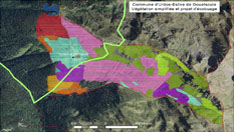
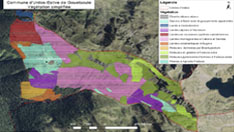

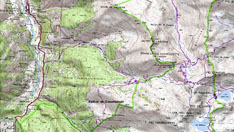
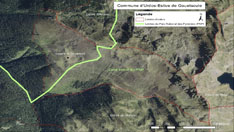
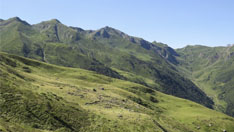

Date:
08 March 2019
#CalidadSuelosAplicacionesMedioambiente













